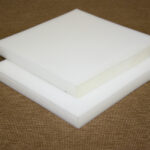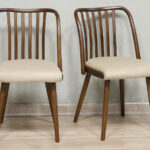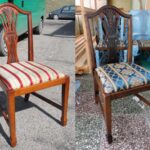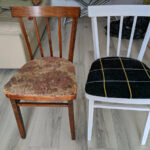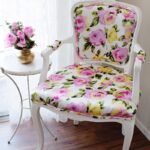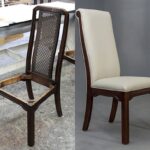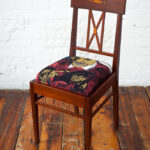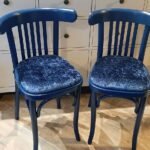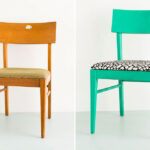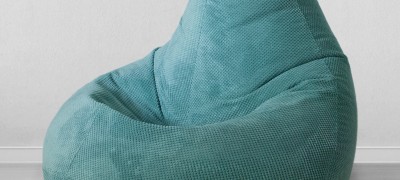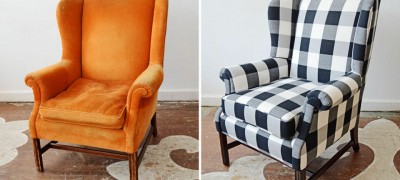Do-it-yourself chairs at home
Remember the unforgettable Kisa Vorobyaninov with a radically black mustache, how he and the son of a Turkish citizen cut up a bunch of soft chairs in search of General's Popova's treasure. And what kind of chairs you need to say - not like the current ones. All in the trash and dump. But it could have been otherwise, saved for posterity. Re-tighten the upholstery, replace the broken parts and voila, the chair is as good as new.

But seriously, hauling chairs is not a very difficult process. Anyone with arms growing out of the right place can handle it. At the same time, the old chairs will get a second life, the grandmother will be satisfied, you get an updated interior and all this at minimal cost.

What is the hauling of chairs for?
To do something useful and beautiful with your own hands is not a reason to replace the worn upholstery on soft chairs. In addition, such measures may be caused by the need to adapt old furniture to the new interior, the desire to update the chairs that have been inherited or restore a headset bought for some unknown reason at a flea market for a pittance.

Another reason for the hauling of chairs is that the upholstery of upholstered furniture deteriorates over time from the dust accumulating in it, burns out under the influence of sunlight, becomes unusable through the efforts of pets, it simply wears out from frequent use.

In addition to replacing the fabric of the top and filler, during the restoration process, all fasteners are tightened, and broken parts of the frame are replaced. After the constriction, the chair can be transformed beyond recognition. For example, if earlier it was upholstered with fabric, then the updated version can become leather.

How to choose a fabric for a constriction
The choice of upper material for chairs must be approached with knowledge of the matter, in order to choose exactly what you need from the variety of upholstery material.

Given the fact that chairs are exposed to mechanical stress on a daily basis, the upholstery requirements must be appropriate:
- resistance to abrasion and stretching;
- strength, resistance to mechanical damage;
- have dirt-repellent properties;
- ease and ease of care;
What material for upholstery should be preferred when choosing - leatherette or fabric? Outwardly, both look perfect. The fabric for the upholstery of chairs is most often represented by the following materials:
- textile;
- from natural or artificial fibers;
- tapestry;
- flock;
- velvet;
- velours.

The best option for upholstery would be leather, high-quality leatherette or eco-leather.Such materials meet all the above requirements, they are more reliable and practical.

How to pull chairs at home with your own hands
If you decide to fit the chairs yourself, then be prepared for the fact that, in addition to the planned work, additional measures will be required. Often breakages are hidden under the upholstery or it becomes necessary to replace the filler. Therefore, taking this opportunity, you can not only pull the chairs, but also repair them. If necessary, make changes to the design or construction.

The process can be conditionally divided into several sequential stages:
- Before starting work, you should decide on the future design and construction, assess the condition of the chair and the amount of work to be done.
- Based on the planned activities, prepare the necessary materials and parts for replacement, as well as tools.
- Directly hauling and reconstruction.

Preparation of materials and chairs
The list of materials for each specific case will be different. But there is a basic list of raw materials that will be needed in any case:
- top fabric, upholstery - selected in color and quality in accordance with your desires and apartment design;
- filler - it can be an independent spring block or soft packings;
- a sheet of cardboard for patterns;
- glue BF or PVA.

Preliminary preparation of the chair itself is also required:
- Dismantling - carefully open and remove the old brackets that secure the upholstery.
- We check the integrity of the frame, tighten the loosened joints, glue the cracks.
- According to the configuration of the seat (back), we cut out a pattern from the cardboard and cut out the upholstery material for covering.

Filler selection
According to its characteristics, the padding for upholstered chair seats is divided into two types:
- Spring - consists of independent spring blocks with layers of soft raw materials. The blocks ensure that the shape of the seat is maintained.
- Springless - does not contain additional metal elements.

The most popular today are the following materials for stuffing:
- polyurethane foam;
- natural latex;
- holofiber;
- expanded polystyrene;
- periotecus;
- felt;
- synthetic winterizer.
When choosing a filler, you should not rely solely on the cost of the material, if you do not want to have squeezed chairs that have lost their attractiveness in the near future.

The constriction process
All the preparatory stages have been passed, you can proceed to the constriction. We start with the seat. We glue the filler to its upper side. After the glue has dried, cover the upholstery material laid out with the wrong side up with a seat, stuffing down. Align with respect to the picture or pattern.

We consistently wrap the edges of the upholstery on the back side of the seat and nail it with staples in steps of 1-2 cm. The fabric must be pulled evenly, avoiding folds. The tightness of the tension should not cause deformation of the filler. Cut off the excess upholstery. The back, if it is soft, must be pulled in the same way. After that, it remains to assemble the chair and make the decor.The bottom of the seat and the back of the back can be closed with a fabric sewn around the edge.

As you can see, a little diligence, imagination, desire and even the most ordinary chair can turn from an ugly duckling into a beautiful swan. The main thing is to correctly approach the choice of the necessary materials, to think over everything in advance and without fuss, slowly translate what you want into reality.

Video: do-it-yourself chair upholstery




